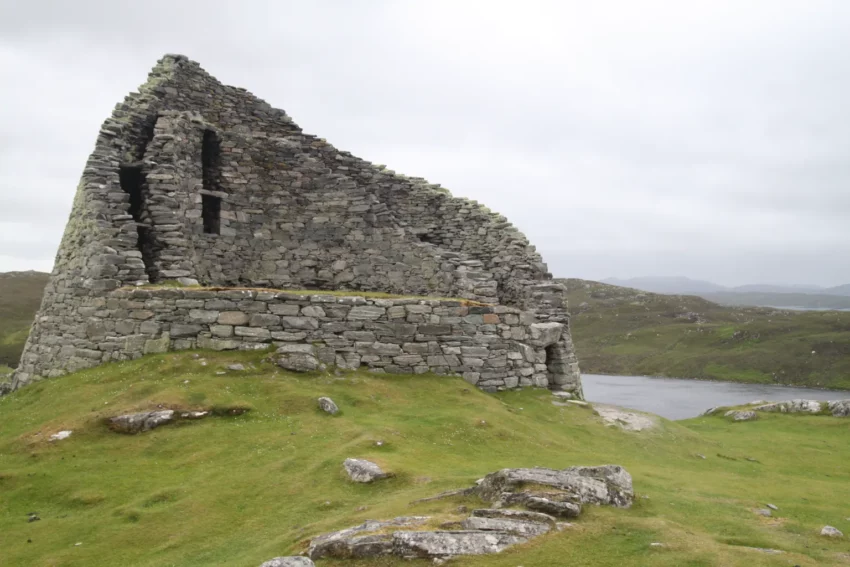Get your dose of History via Email
The Significance of Dun Carloway
Dun Carloway, located on the Isle of Lewis in Scotland, stands as one of the most well-preserved Iron Age structures in the country. This ancient broch—a type of dry-stone hollow-walled structure found in Scotland—serves as a prominent historical landmark that provides invaluable insights into the construction techniques and living conditions of the period dating back to the 1st century AD.
Architectural Mastery of the Iron Age
The broch’s impressive preservation allows for a detailed examination of its structural elements. Dun Carloway showcases a double-wall construction with a unique feature; an interior gallery within the walls, providing a glimpse into the sophisticated building strategies employed during the Iron Age. The original structure had an inner diameter of 9 meters, with a wall thickness of about 3 meters, illustrating the strategic balance between living space and fortification required for survival during the era. Standing at a significant height, which is estimated to have been around 9 meters at its peak, it provides a testament to the architectural mastery of its builders.
Theories on the Purpose of Dun Carloway
While the exact purpose of Dun Carloway remains a topic of academic debate, it is speculated to have served as a defensive stronghold, a statement of power, and a habitation site. It’s notable for its strategic location, which offers extensive views over the surrounding area and the sea, suggesting its utility as a lookout point to defend against any threats. This strategic viewpoint and the resilient construction suggest that Dun Carloway played a vital role in the local community during the Iron Age and possibly even into the post-Roman periods of Scotland.
The Historical Legacy and Interpretation
Historical texts do not mention Dun Carloway until the 16th century AD, yet archaeological evidence indicates its construction could date back to the 1st century AD. It’s believed that the broch continued to serve as an important local stronghold through the centuries, even featuring in local conflicts of the 1500s and 1600s. The name ‘Carloway’ itself is possibly of Norse origin, reflecting the diverse cultural influences that have shaped the region over its long history.
Excavation and Preservation Efforts
Excavation work in the 19th and 20th centuries has provided further information on the structure and its possible uses. Notably, Sir James Matheson, who owned the Isle of Lewis, undertook conservation efforts in the mid-19th century to prevent further deterioration of the site. Dun Carloway is now under the care of Historic Environment Scotland and remains a visitor attraction, offering a tangible connection to Scotland’s Iron Age past.
Interpretation and Visitor Experience
For contemporary audiences, Dun Carloway serves as an interpretive site that offers a physical touchpoint to thousands of years of human history. The site features informational displays that allow visitors to understand the historical context and the daily life of those who once occupied the broch. As a cultural asset, it also aids in promoting the broader heritage of the Isle of Lewis and the wealth of archaeological sites within the Hebrides.
Conclusion
Dun Carloway remains an icon of Scotland’s Iron Age, withstanding the test of time to tell the story of ancient life on the Isle of Lewis. Through its sophisticated architecture and enduring legacy, the broch continues to captivate historians, researchers, archaeologists, and visitors alike. As a protected historic site, Dun Carloway acts as a guardian of Scotland’s past, ensuring that the lessons of history and the achievements of ancient engineering are not forgotten.
Sources: Wikipedia

